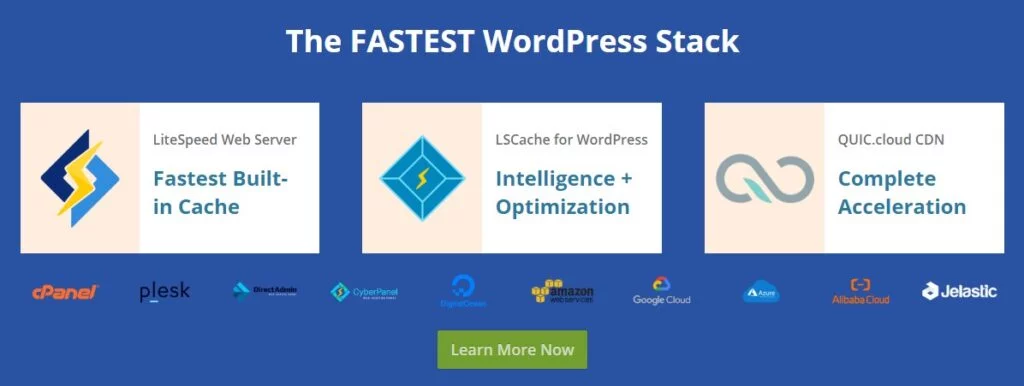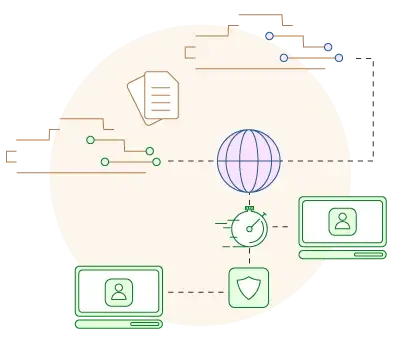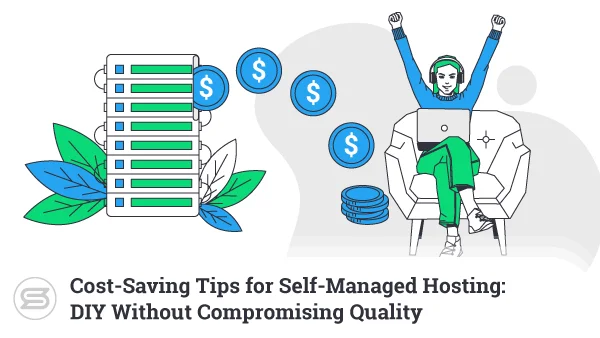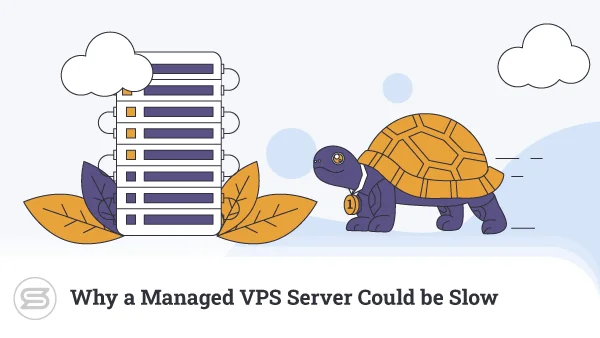People say that building a website starts with your hosting provider. We can do you one better — the first step is ensuring you are on the right web server.
Your hardware heavily influences all hosting essentials — the speed of your website, its constant uptime, your capacity to grow. In short, a reliable server can be the difference between success and failure for your business.
So today, we are going to put two of the most prominent solutions in the industry head-to-head to see which is better.
We have LiteSpeed vs Apache.
Which one is faster? Which is more versatile? How can they fit your budget?
But first, let’s start with the basics.
What is Apache?

Apache is the market behemoth when it comes to web server software. The company has been around since 1995 and rocking the industry ever since. Although Apache can run on Windows servers, it gets the best results on Linux-based machines.
That’s completely understandable. Apache is an open-source solution, part of the infamous LAMP stack (Linux, Apache, MySQL, PHP), the most popular software configuration among web hosts. This server component is supported and maintained entirely by an open community of developers, united under the non-profit organization Apache Software Foundation (ASF).
The platform relies on Multi-Processor Modules (MLM) to command the network ports, accept and handle requests, strengthen security, the works. This modular system can run in three modes:
- Process — good for small websites
- Worker — best suited for low to mid-traffic projects
- Event — the default Apache server mod, handles longer connections and more server load.
In short, Apache is flexible, versatile, but most importantly — it’s completely free.
What is LiteSpeed?

Many modern server solutions use some existing technology as a base to build upon. That was exactly the case with LiteSpeed.
The LiteSpeed Web Server (LSWS) is the proprietary server solution of LiteSpeed Technologies. The software was first released in 2003 and marketed as an Apache replacement. It has the ability to read Apache configuration files, execute the same commands, and integrate fully with all control panels like cPanel, Plesk, and DirectAdmin.
The main improvements were in the Performance and Scalability departments.
Although LiteSpeed aimed to replace Apache, it does not use the same code base. In fact, its event-driven architecture makes the solution much more similar to Nginx. The software uses predictive mechanisms to handle spikes of incoming traffic and lightens the load on the server.
LiteSpeed always keeps up with the trends — in 2015, it was the first popular server solution to offer support for the newly-released HTTP/2 protocol.
That’s enough history lessons for now — time to compare Apache vs LiteSpeed and find out which one rocks the stage more.
1. Popularity — winner: Apache
There could only be one winner in the Popularity contest. After all, Apache had about a decade more to take over the market. When LiteSpeed came out, its competitor was already powering a whopping 63% of all websites.
The situation today is a bit different and depends on which third-party source you’re checking.
According to Netcraft’s April 2020 report, Apache already lost the #1 spot to Nginx, now down to only 25% market share. Still, the open-source software keeps the lead when we look at the top 1 million websites only — 29.55% of those pages are Apache-powered.
In comparison, LiteSpeed hosts 1.86% of those websites.
Web survey giants W3Techs tell a different story. Their recent usage statistics report shows Apache is still the king, reigning over 39% of the internet. Nginx is second with 31.9%, and LiteSpeed is at #5, responsible for 6.4% of online sites.
You can also check our Apache and Nginx comparison to see who wins the full battle.
It’s clear who the winner is here — LSWS might be on the rise but still has some way to go.
2. Performance (Static Content) — winner: LiteSpeed
Because of its asynchronous architecture, LiteSpeed is much more flexible with higher traffic and concurrent connections. The solution utilizes a smart caching methodology where the system stores compressed cache files instead of creating a new request every time the user tries to view them.
This way, LSWS is able to increase the server’s PHP performance by 50% and ultimately makes it up to six times faster than Apache for static content.
There is another plus to it — LiteSpeed does wonders when it comes to compressing pages. This way, each new request is not only served faster but takes less RAM as well.
LiteSpeed certainly lives up to its name — static websites can get much more out of LSWS than the standard Apache server configuration.
3. Performance (Dynamic Content) — Draw
Most websites nowadays are dynamic. They utilize server-side scripting, which determines how the server handles requests from different users.
Content management systems (CMS) are often-employed tools for creating dynamic content. WordPress, Magento, Joomla, Drupal — there is a high chance your site utilizes a CMS solution. There is no clear winner when you put the LiteSpeed vs Apache performance to the test, though.
You can easily preconfigure the latter with modules like FastCGI and PHP-FPM. This way, it would be able to handle higher loads and speed up your pages in a multi-user PHP environment.
LSWS is just as great, and the benchmark tests confirmed that notion. Apache delivered slightly better raw speeds, but LiteSpeed’s advanced page compression gave it a slight edge for bigger websites.
Nothing fairer than a draw here.
4. OS Support — winner: Apache
The OS is another crucial element of your website configuration. Linux servers are still the dominant solution in the web hosting field, so Unix-like operating systems are a natural choice. In that aspect, it wouldn’t make much difference what web server you are running.
Apache supports all Linux OS versions and instances — Fedora, Ubuntu, RedHat, you name it. And as LiteSpeed uses Apache as a base…well, you can connect the dots.
It’s a different ball game for the Windows users.
While Apache is fully optimized for Win instances, LiteSpeed does not support the OS. According to the developers, Windows systems are quite different from Unix-like solutions and require much rework of the existing configuration.
Apache gets the point here.
5. Security — winner: LiteSpeed
You should never neglect the security side of things. Cybercrime reports reveal a shocking 600% rise in online attacks since 2017, resulting in approximately $500 billion in losses for the global economy.
Apache comes with all the essentials needed to secure a web server. You can apply security rules, block user access, or remove unnecessary modules. Additionally, Apache tries to stay up-to-date with the latest server safety standards, frequently releasing vulnerability patches and security optimizations.
Still, you need some admin management knowledge and reconfiguration. LiteSpeed offers high-level website protection out of the box. It supports Apache’s mod_security rules, so you can expect the same hardened server defenses.
There are certain things in which LiteSpeed excels, though, and one of them is undoubtedly the protection against brute force and other DDoS attacks. In a simulated test, LSWS easily tackled the same number of server requests that previously made Apache crash.
Every little thing counts, and LiteSpeed will have to take this one.
6. Support — winner: LiteSpeed
When you compare the LiteSpeed web server vs Apache in terms of support, both solutions keep detailed documentation for anyone interested in self-helpers. Naturally, the guides are a bit more technically-oriented, but even a novice user can find enough learning materials.
Here, let us save you some time with these links:
- Official Apache documentation
- Apache Developers Pages
- Official Litespeed documentation
- LiteSpeed Wiki
Still, LiteSpeed seems to have a better-organized community. Apart from the dedicated forums, LSWS users have their own groups in Slack and Facebook, often discussing optimization tips or resolving client issues.
As for live tech support, Apache simply doesn’t have any. The software is open-source, so the community is your best bet for live assistance. In comparison, LiteSpeed is a commercial product, so they duly deliver on dedicated support. You can easily submit a help ticket from your user area, and the operators are generally helpful.
You can even opt-in for Premium Support with LiteSpeed and get services like module installation, DDoS package setup, or blacklist removal.
Mind you, those services can be quite pricey — for example, $999 yearly for server management sounds way overpriced for a startup or an SMB. But if you don’t have an IT person and you can afford it — the LSWS experts might be exactly what you’re looking for.
LiteSpeed takes this round because of the sheer variety of support options and dedicated assistance.
7. Price — winner: Apache
Apache already has the upper hand here. The software has always been distributed for free, which is one of the reasons it’s such a popular solution for web server management.
As a proprietary platform, LiteSpeed is a paid product, with prices starting from $10/mo and going all the way up to $92/mo at the highest tiers. There is a free version as well, but quite limited — it can only support one domain and gives about 2 GB RAM.
At the end of the day, if the price tag is your biggest selling point, Free (Apache) will always beat Paid (LiteSpeed).
Final Takes
We’ve arrived at the end, and it’s time to answer the million-dollar question — which web server software is better in the LiteSpeed server vs Apache comparison?
And the winner is… LiteSpeed!
- LSWS relies on an event-driven architecture that can serve static content up to six times faster than Apache. Additionally, the platform is unmatched when it comes to compressing pages.
- LiteSpeed powers some stable and secure servers. On top of all the rules and measures you can apply, there is advanced DDoS attack protection that significantly lowers the risk of downtimes during high load.
- Ideal for bigger enterprise projects and high-traffic websites.
On the other hand:
- Apache supports all server operating systems, including Windows instances.
- The platform is completely free to use and well-documented if you decide to manage it by yourself.
Performance and security take the race for us, but that doesn’t mean LiteSpeed is a fit-all solution.
What about you? Which server technology you’ve found best for your web project? If you are still looking for one — check out Scala Hosting’s Managed VPS and Unmanaged Cloud VPS deals.


FAQ
Q: Is LiteSpeed free?
A: LiteSpeed is a proprietary web server software that offers one Free and seven Premium plans. Prices start from $10/mo, but you can get a discount if you prepay the package for the whole year. A free trial is available on all plans.
There is an open-source version of LSWS called OpenLiteSpeed, which is absolutely free to download and install.
Q: What is LiteSpeed cache?
A: LiteSpeed Cache (LSCache) is a built-in performance accelerator for dynamic websites on LSWS. It can significantly boost speeds and page load times for sites using WordPress, Joomla, Drupal, and other popular CMS solutions.
No need to pay additionally for LiteSpeed’s cache solutions — they are available on all featured plans, even the Free one.
Q: Is LiteSpeed better than Apache?
A: In many ways, LiteSpeed reigns supreme when compared to Apache. It handles high traffic loads much better and compresses pages like no other. Security-wise, things are also looking good for LiteSpeed, as the solution has proven impenetrable during cyber attacks time and time again.
Apache still comes with some unmatched benefits, though — its raw speeds make the software a good match for small, dynamic websites and projects with low resource demand. And, of course — it’s free!
What is a VPS – Everything you need to know!



